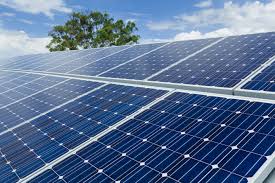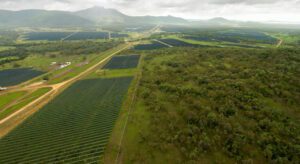Almost everywhere, and from nearly every corner, we hear the refrain: The solar revolution is coming and it is unstoppable. There is now general agreement – from analysts, researchers, the industry, market pundits – that energy markets are being transformed, and half our power needs will be self-generated within a few decades.
Unstoppable thought this force may well be, it seems it can certainly be slowed. And recent Australian pricing decisions suggest that the incumbents are doing their level best to make hay, not so much while the sun still shines, but while policy and pricing regulators are happy to keep moving the goal posts to protect revenue streams.
The forecasts seem emphatic. The Australian Energy Market Operator predicts that rooftop solar will amount to 25,000MW by 2025. Bloomberg New Energy Finance predicts 37,000MW by 2040. Investment banking giant UBS suggested, in one “dream” scenario, solar could provide half the world’s power needs by 2050.
Even the owner of Australia’s biggest coal-fired generator concedes that half of all demand will be met by distributed energy, mostly solar on rooftops of homes and business, and through battery storage. The big “gentailers” – both in Australia and overseas – are busily revising their business models to make sure they are not left behind.
Over the last few weeks, however, there have been some disturbing trends, suggesting that the solar industry has a major battle on its hands, even if the flagship policy, the Renewable Energy Target, remains untouched for small-scale installations, the Abbott government seems intent on giving big solar a boost.
The problem occurs at the meter, and on consumer bills. Across Australia, pricing regulators and utilities have taken action to protect their revenues and make rooftop solar less appealing for consumers. They have done this through a bunch of different means.
In South Australia, the grid operator has applied to slap solar households with higher charges, and West Australia’s state-owned utilities have been considering a similar measure.
In Queensland, fixed tariffs have been jacked up, removing the incentive for consumers to use less electricity or to install solar. For low energy users, particularly pensioners, half the bill is now unavoidable. New limits are also being placed on solar installations in regional areas.
In NSW, something called “declining block” tariffs are about to be introduced, where rates are actually higher for a set amount of consumption, and then decline afterwards. It is akin to a fixed charge, and does not encourage efficiency.
Elsewhere, metering charges are also being jacked up to make it more expensive for households to install solar. New “so called” cost reflective tariffs are being introduced, but are being criticised for being anything but “cost reflective”, because they seek to reclaim past gold plated investments, not new ones.
The NSW government-owned operators are also appealing a recent regulatory ruling that would reduce the amount of costs that they can re-coup from consumers – a move that is effectively trying to lift prices and boost the revenues as the government prepares the assets for sale.
The one piece of good news has been the instant tax write-off for small businesses, but this can only be used on business premises. Still, local communities are trying to push through initiatives that include shared solar, community-owned plants, and even going off the grid.
Elsewhere, solar installers are also being squeezed by the big energy players, with big balance sheets into the solar market. The majors, such as Origin Energy and AGL, are now offering rooftop solar for free, and then offering to sell the output back to the consumer at a deep discount to grid costs. Origin even got an extra $100 million in finance from the Clean Energy Finance Corporation to expand its activities.
As one analyst put it to RenewEconomy, “there is a lot of complicated stuff going on and it is difficult to work out who is doing what, and who is going to emerge as the winner, and who will be the losers.”
That, he noted, is kind of by design. The “confusion is profit” mentality rules, but behind the scenes there is a massive but as yet unstated battle occurring between network operators and retailers. This is largely over who will capture the “value” offered by the big shift to solar and storage. Both parties have massive sunk investments to recoup, and both play in deregulated and regulated markets.
In the background, the policy and pricing regulators are ducking for cover. The Australian Energy Market Commission has set out a framework of rules, without being specific. The Australian Energy Regulator has a series of processes, but with the same problem.
As our analyst explained, “no one wants to make a decision. The networks are throwing up anything to see what sticks, and the retailers are just passing on the costs.”
The constantly moving picture around tariffs – and the huge variations between states and distribution areas – makes it hard for consumers to judge the value of installing solar, or battery storage. Most of the forecasts vary the caveat that tariffs will not become a roadblock.
Interestingly, this week Paula Conboy – the new head of the AER, who last year noted the rise of the “pro-sumer” and the need to set returns and tariffs that benefit consumers, rather than the incumbent network operators – has foreshadowed plans to get at least some long-term visibility in tariff structures.
Rather than a piecemeal, year by year approach, the AER wants to build in tariff structures that will be binding for a regulatory control period (typically five years), and any changes to tariff structures will need AER approval.
That may be good for visibility for consumers, and to help make decisions about whether solar and storage is a good deal or not, but it may also lock in poor outcomes.









